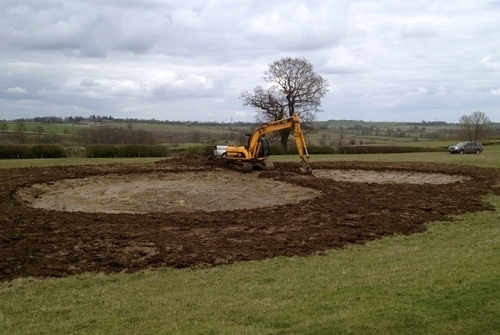4 Minute Read
By Mathew Goodall, GWCT Head of Education & Advisor and Emma Mellen, Communications & Engagement Officer

World Wetlands Day on the 2nd of February each year aims to raise awareness about wetlands; it also marks the anniversary of the Convention on Wetlands, an international treaty signed in 1971. The themes of this year’s awareness day are “Value”, “Manage” and “Restore”.
Why wetland biodiversity matters
Nearly 90% of the world’s wetlands have been degraded since the 1700s, and we are losing wetlands three times faster than forests and 25% of wetland species are today threatened with extinction. Global deforestation dominates headlines and social awareness of habitat destruction, nevertheless, wetlands are critically important ecosystems that contribute to biodiversity, climate mitigation and adaptation, freshwater availability, and world economies.
What are wetlands?
There are many different kinds of wetlands and many ways to categorise them, with five general categories: marine (ocean), estuarine (estuary), riverine (river), lacustrine (lake), and palustrine (marsh). Types of wetlands include rivers and streams, floodplains, deltas and estuaries, lakes, ponds, ditches, wet grasslands, marshes, mudflats, peat bogs, fens, wet woodlands, reedbeds, mangroves and coral reefs, to name just a few!
What are the challenges?
About 35% of the world’s wetlands have disappeared since the 1970s – emphasising the importance of restoring, conserving, and promoting the wise use of wetlands.
- Between 1970 and 2014, populations of fish, birds, mammals, amphibians and reptiles decreased by 60%.
- Since 1970, 81% of inland wetland species and 36% of coastal and marine species have declined.
- 25% of wetland species are threatened with extinction, including water birds, freshwater-dependent mammals, marine turtles, and coral reef-building species.
Wetland biodiversity loss is a major component of the global nature emergency engulfing our planet. Today, species are declining faster than at any time in human history and the pace is accelerating, with wetland species declining most.
So, how does this involve your farm or shoot?
After all, it’s very unlikely that you manage wetlands unless you manage a nature reserve.
The key here is that although this is not about turning your farm or shoot into a wetland, we can recognise the value of a ‘wetland’ habitat and establish it where we can fit it in. If we all did a little, it would dramatically improve the connectivity of this type of habitat across the landscape and our countryside and biodiversity would be much greater for it. This is especially the case when the connectivity is planned, by working together with our neighbours as is the case in a farmer cluster.
Wetlands are an essential part of the landscape that can be integrated throughout but often are taken for granted for their benefits to the environment. They provide filtering services for water, habitats for species, a mainstay for vegetation and species that are otherwise threatened due to urban developments.
What can we do?
If we talk about a wetland you might think of a local nature reserve with lakes, scrapes, wet woodland, amongst other features listed earlier in this blog; however, on private land and farmland, it is very unlikely to replicate all these features in one location. Environmental water is a term coined to describe an area that is designed and managed to support or enhance natural ecological systems and achieve environmental benefits, especially in dry periods.
Considering the location and land capability is important, looking at what fits best where, for both species and management, whilst fitting in with financial resources available. Searching for grant aid can help justify your decision.
A conservative estimate is that at least 50% of our ponds have been lost in the last 50 years. Historically most farms would have several ponds to water livestock and draught horses, but this is no longer the case. Looking at old maps and reinstating an old pond is a great place to start and often these areas might be the least productive parts of the field, depending on what was used to fill in the old pond.
By installing a pond, you will increase the diversity of plant life on your farm, which in turn creates an insect-rich habitat that helps your farmland birds in the process. In the Water Friendly Farming Project, we found that adding new clean water ponds brought substantial benefits such as increasing total-catchment plant species richness by 26%, and the number of rare plant species by a huge 181% - emphasising that life thrives in wetlands.
You might aim to enjoy some duck flighting in the season in which case you may opt to find an ideal location for a couple of good flight ponds. Alternatively, you may be particularly invested in helping the local lapwing or curlew population, both of which have suffered dramatic declines in recent decades, and you might opt for a scrape to offer optimal foraging habitat. In either case, your creation will have many far-reaching benefits for a whole host of additional species.
Conservation includes water usage and water supply; educating people about water environments will hopefully encourage more people to value wetlands and act through “managing” and “restoring” wetland environments, thus species protection through creating an environment for greater biodiversity to thrive.
Whatever you choose to do, creating and preserving a ‘wetland’ habitat will, without doubt, enhance the biodiversity on your farm or shoot, and if you collaborate with your neighbours across the landscape the benefits will be magnified. Through combined thinking to best use limited resources, getting the whole design right, and fitting it into the local landscape is critical to success; a visit from your Game & Wildlife Conservation Trust's local advisor is the way to be sure that you will get the most out of your new ‘wetland’.